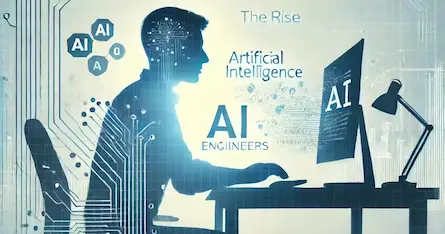Understanding Large Language Models (LLMs) and Their Applications
What is a Large Language Model (LLM)?
A Large Language Model (LLM) is an advanced type of artificial intelligence designed to process, generate, and understand natural language. LLMs are trained on vast datasets containing text from books, websites, and articles, enabling them to perform tasks such as translation, summarization, question answering, and content generation. Models like OpenAI’s GPT, Google’s BERT, and Meta’s LLaMA are examples of LLMs that have revolutionized various fields of Natural Language Processing (NLP).
LLMs have found applications in numerous domains, including chatbots, automated customer service, creative content generation, and advanced data analysis, demonstrating their transformative potential.
How LLMs Work
Large Language Models rely on deep neural networks, especially transformer architectures, to predict the next word or token in a sequence. Below are key steps in their operation:
-
Pre-training:
- The model is exposed to large amounts of textual data to learn word associations and patterns.
- During this phase, the model builds statistical relationships between words and phrases without any task-specific tuning.
-
Fine-tuning:
- In this phase, the model is adjusted for specific tasks like translation or question answering by using curated datasets.
-
Inference:
- When deployed, the LLM takes a user query as input and generates relevant responses based on its learned knowledge.
The transformer architecture introduced in Google’s paper “Attention is All You Need” plays a crucial role in enabling LLMs to understand the context and meaning of words over long sequences efficiently.
Applications of LLMs
LLMs are capable of addressing complex language tasks across industries:
1. Conversational Agents
- Chatbots powered by LLMs provide personalized customer support.
- Examples include virtual assistants like Alexa, Google Assistant, and ChatGPT.
2. Automated Writing and Summarization
- LLMs can generate reports, blogs, and creative content such as short stories.
- They also summarize lengthy documents into concise information.
3. Code Generation
- Tools like GitHub Copilot use LLMs to assist programmers by suggesting code snippets and debugging solutions in real time.
4. Sentiment Analysis and Market Insights
- LLMs are utilized in finance and marketing to analyze customer feedback and market trends by processing large amounts of text data.
LLMs: Strengths and Challenges
While LLMs are groundbreaking, they come with both advantages and challenges:
Strengths:
- High Accuracy: LLMs excel at understanding and generating contextually relevant text.
- Versatility: They can handle multiple languages and tasks without needing separate models.
- Continuous Improvement: As models become larger and more refined, their performance improves across various tasks.
Challenges:
- Bias: LLMs can reflect biases present in their training data, leading to potentially unfair or misleading outputs.
- High Resource Usage: Training and fine-tuning LLMs require significant computational resources and large datasets.
- Hallucinations: LLMs may sometimes generate incorrect or nonsensical information that appears plausible.
Future Trends in LLMs
The future of LLMs will involve even more sophisticated models with better contextual understanding and fewer limitations. Some of the upcoming advancements include:
- Smaller, Efficient Models: Efforts are being made to reduce the size of LLMs without sacrificing performance.
- Multimodal Models: These models can process not only text but also images, audio, and videos, enabling more comprehensive applications.
- Domain-Specific LLMs: Specialized LLMs for healthcare, law, and finance are being developed to address niche problems with higher accuracy.
- Ethics and Explainability: Future models will focus on ethical use, transparency, and interpretability to increase trust among users.
Building Your Own LLM Application
If you’re interested in building applications using LLMs, follow these basic steps:
Step 1: Install Dependencies
Make sure you have Python and the necessary libraries installed.
pip install transformers torch
Step 2: Load a Pre-trained LLM
The Hugging Face Transformers library provides access to popular LLMs.
from transformers import pipeline
# Load a pre-trained text generation model
generator = pipeline("text-generation", model="gpt2")
# Generate text based on input prompt
response = generator("Once upon a time", max_length=50)
print(response)
Step 3: Fine-tune the Model (Optional)
You can fine-tune the model on specific datasets to tailor it for specialized tasks.
Conclusion
LLMs are transforming industries by unlocking the power of natural language understanding and generation. From conversational agents to creative writing tools, LLMs offer unprecedented capabilities. However, developers must also consider the ethical implications of using such powerful models.
The future of LLMs lies in developing more efficient, transparent, and versatile models that can handle diverse tasks and deliver insights while mitigating biases and inaccuracies.
For more insights on AI and programming, stay connected with Krishna-Blogs!
GitHub Repo — For reference
Contact: ankushchudiwalwit@gmail.com or snakesnnetworks@gmail.com



